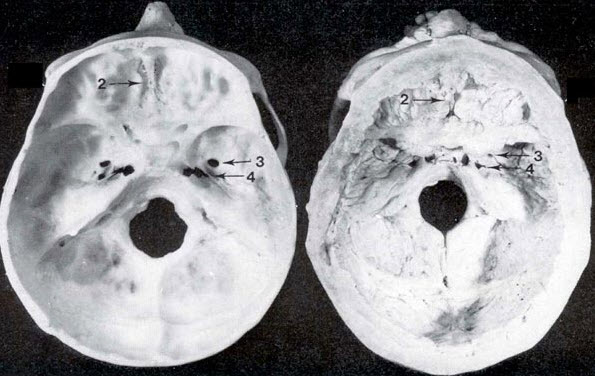
A special type of the bone disease osteopetrosis that exists in Västerbotten, Sweden is caused by a gene mutation that researchers at Uppsala University now have managed to trace all the way back to the Middle Ages.
In a healthy skeleton, there is a balance between new formation and breakdown of bone tissue. Bone is formed by a cell type called osteoblasts, while osteoclasts from bone marrow carry out the resorption process.
In an individual suffering from the type of osteopetrosis prevalent in Västerbotten – a condition colloquially known as marble bone disease – the ability to break down bone tissue is absent. Since the ability to form bone isn’t affected, the bone mass will gradually increase. As bone mass increases, there is less room for the bone marrow, and this disturbs the creation of new blood in the body.
When blood isn’t produced properly, the individual suffers from anaemia and becomes more susceptible to infections. As the channels in the skull through which the hearing and optic nerves run becomes blocked by new bone tissue, the individual develops problem with seeing and hearing, and can become both blind and deaf.
Despite substantial bone mass, the skeleton becomes brittle and fractures easily. The disease also impacts tooth development and caused delayed tooth eruption.
A common ancestor
The Västerbotten form av osteopetrosis is a very rare hereditary disease, with only five diagnosed patients alive today. (Of these five, one has become healthy after a bone marrow transplant.)
We now know that the identified patients in Västerbotten have a common ancestor, an individual in which a mutation took place 950 years ago. The research team behind this discovery was led by Eva-Lena Stattin, researcher at the Department of Immunology, Genetics and Pathology at Uppsala University and senior physician at Uppsala University Hospital; Ulf Lerner, senior professor at the Centre for Bone and Arthritis Research at Gothenburg University; and Petra Henning, researcher at Sahlgrenska Academy.
The mutation occurred in the gene that codes for the protein sorting nexin 10 (SNX10). Even though the SNX10 gene is not only expressed in osteoclasts, but also in other cells, a comprehensive clinical mapping has shown that the mutation that Västerbotten patients have only affects the skeleton.
The study by Stattin et al have also shown that the mutation doesn’t affect the formation of osteoclasts – these cells are still formed but without any ability to break down bones. A specialised structured called the “ruffled border” is defective and without a properly functioning ruffled border the cells can’t dissolve the mineral and break down the proteins in bones.
Citations
Eva-Lena Stattin et al., (2017), SNX10 gene mutation leading to osteopetrosis with dysfunctional osteoclasts, Nature, Scientific Reports, DOI:10.1038/s41598-017-02533-2, http://rdcu.be/thRC
